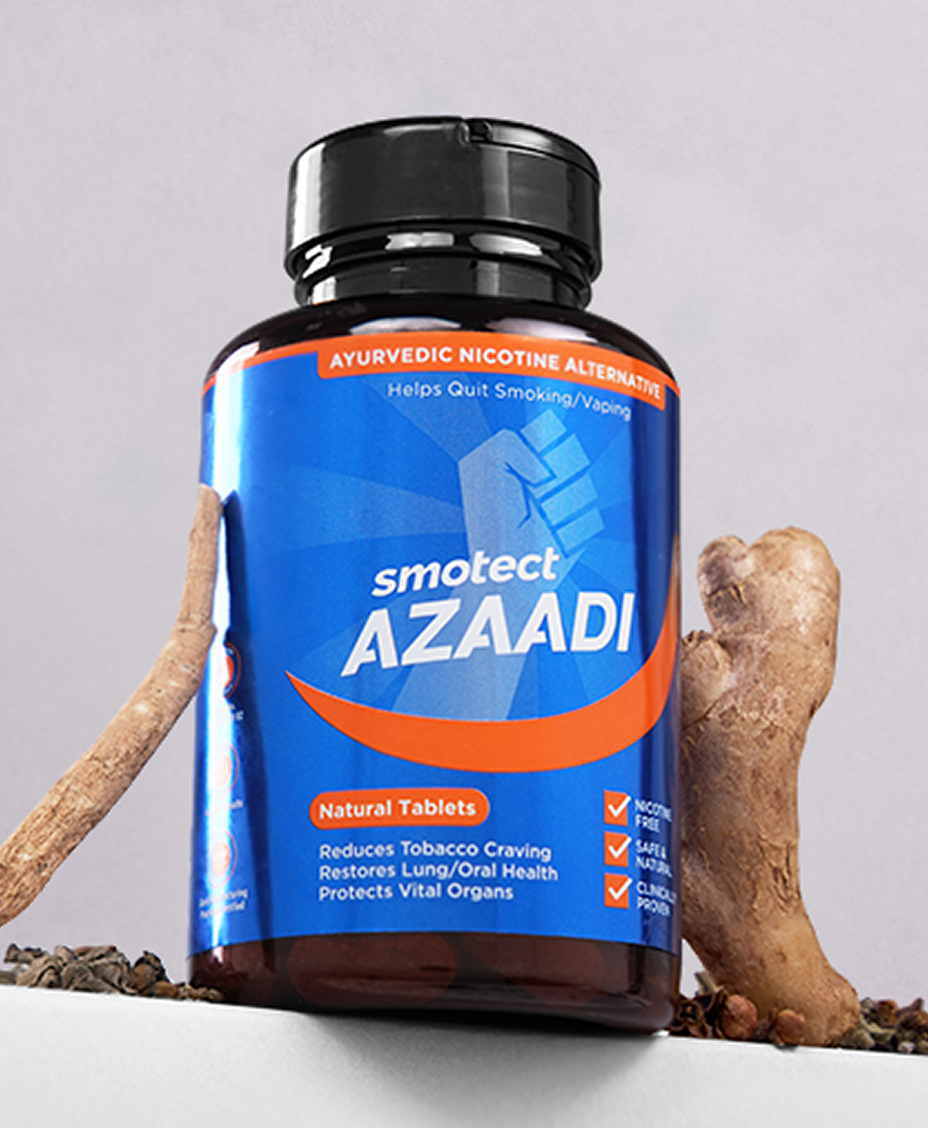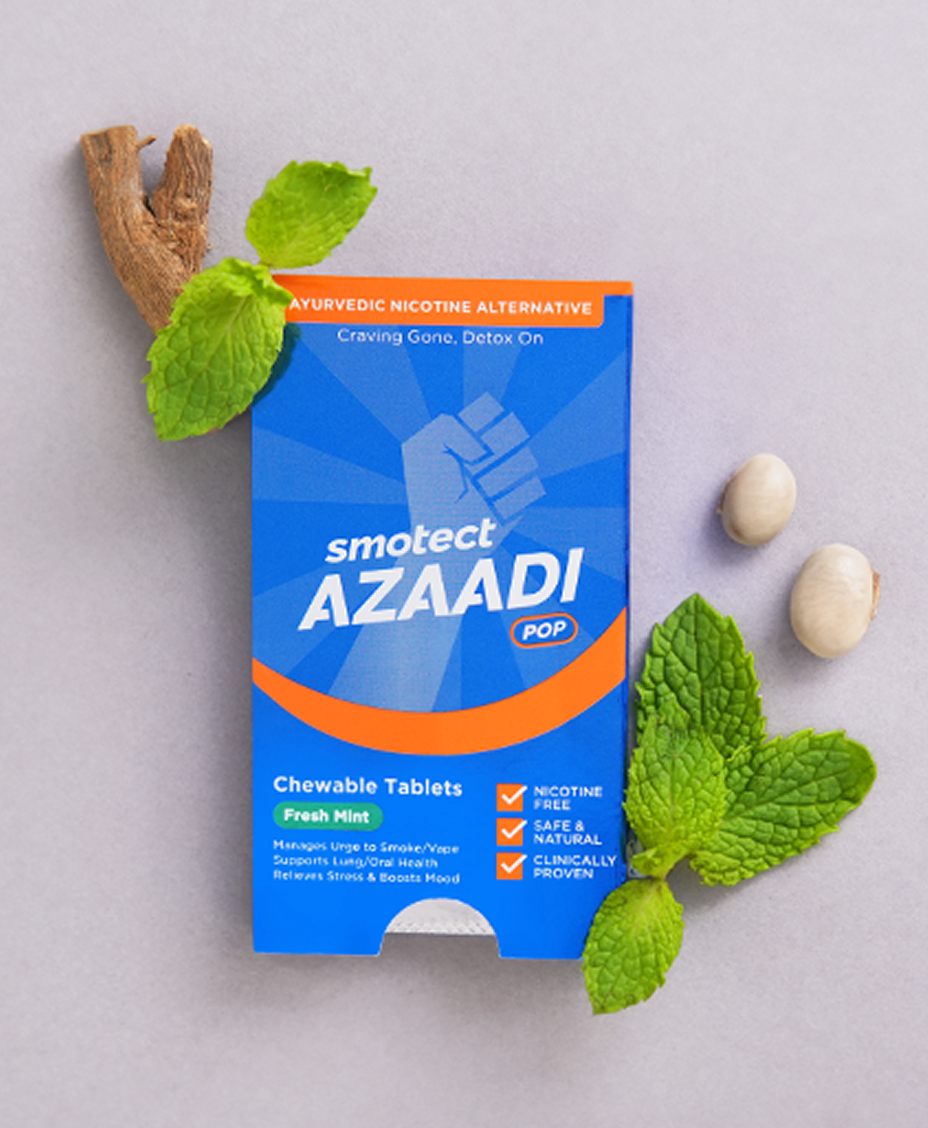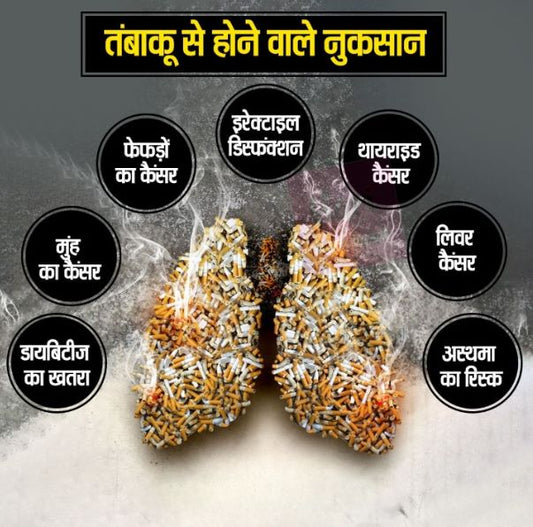

Clinically Tested.
Proven to Help
You Quit and Heal
Science that Works. Research You Can Trust.
Azaadi is not just Ayurvedic, it’s clinically validated. Conducted at leading research institutions, our studies demonstrate significant improvement in addiction management, stress relief, and lung function recovery. These trials ensure our formula isn’t just natural-it’s effective.
Clinical Key Findings
-

Treats
AddictionFormulated to reduce dependency on harmful substances like gutkha and tobacco, by addressing the root cause of addiction.
-

Manages
CravingsClinically shown to reduce the intensity and frequency of tobacco cravings from day 1.
-

Improves Oral
HealthReduces mouth ulcers, gum inflammation, and foul breath caused by tobacco consumption.
-

Improves Lung
FunctionIncreases peak expiratory flow rate (PEFR) and improves breathing comfort and respiratory.
-

Manages
StressContains adaptogens that lower cortisol levels, helping users stay calm during withdrawal.
-

Boosts
EnergyImproves stamina and reduces fatigue, common withdrawal symptoms-by enhancing overall vitality.
-

Improves
StrengthReported increase in muscular strength and physical endurance in clinical subjects.
-

Enhances
MoodHelps restore serotonin balance and reduce irritability during the quitting process.

Efficacy in Treating Tobacco Addiction
Study says: A Two Arm, Double Blind, Randomized, Prospective, Multi centric, Placebo controlled, Clinical Study to Evaluate Efficacy and Safety of Smotect Azaadi in Smokers.
Read Study on CTRI/2017/06/008787

Efficacy in Treating Tobacco Addiction
Study says: A Two Arm, Open Label, Randomized, Multi centric, Interventional, Prospective, Clinical Study to Evaluate Efficacy and Safety of SMOTECT-AZAADI granules in comparison with Nicotine Replacement Therapy (NRT) in Tobacco users (Chewing).
Read Study on CTRI/2023/07/055111

Efficacy of Azaadi Mix amongst Gutkha users
Study says: Clinical study to evaluate efficacy and safety of Smotect Azaadi Mix Granules for its effect on nicotine (tobacco) de-addition in gutkha users.
Read Study on CTRI/2025/01/079753

Efficacy and safety of Azaadi Pop amongst smokers
Study says: Clinical study to evaluate efficacy and safety of Smotect Azaadi chewable tablets for its effect on nicotine de-addition in smokers
Read Study on CTRI/2025/01/079754
Clinically Proven formula. Holistic Wellness
-
Azaadi Mix
आयुर्वेदिक गुटखा विकल्प
Gutkha Habit? Choose Azaadi.
मज़ा वही, नुकसान नहीं
स्मोटेक आज़ादी में हमने बनाया है दुनिया का पहला आयुर्वेदिक गुटखा विकल्प – जो देता है वही स्वाद और चबाने का मज़ा, लेकिन बिना तंबाकू, बिना पान मसाला, बिना नुकसान।
जब भी मन करे या आदत सताए – बस इसे चबाएं।
ना थूकने की झंझट, ना लाल दांत, ना मुँह की बदबू।
यह विशेष आयुर्वेदिक मिश्रण – गुटखा / तंबाकू की तलब पर करता है असर, सुधारता है मुँह का स्वास्थ्य, शरीर को बनाता है अंदर से मज़बूत, और कम करता है तनाव – एक बेहतर मूड के साथ।
अब गुटखा नहीं, आज़ादी चबाएं… -
Azaadi Tablets
Quit Smoking & Repair Damage
Quit Tobacco Completely in 3 Months!
When you are ready to Quit for GOOD!
Smotect Azaadi is the world’s first clinically proven Ayurvedic Nicotine Alternative, crafted into oral tablets. It helps manage cravings, supports vital organs and prepares your body for a nicotine-free life - without restlessness, anxiety or withdrawal symptoms.
Follow our 3-month oral tablets course to quit completely and heal naturally. No pressure. No guilt. Just a smarter, cleaner way forward.
Craving Gone, Detox On! -
Azaadi Pop
Manages Craving Instantly
On-the-go Craving Relief.
Freedom in Every Bite!
Smotect Azaadi is the world’s first clinically proven Ayurvedic Nicotine Alternative, crafted into chewable tablets with refreshing flavors. It helps manage cravings instantly, that too nicotine-free - without restlessness, anxiety or withdrawal symptoms. We know quitting tobacco isn’t easy, that’s why Azaadi products are built for your pace - pop a chewable tablet when cravings strike and see it go away instantly, no pressure. No guilt. Just a smarter, cleaner way forward.
Break Free. Stay Clean. Live Azaadi!
Let’s Keep in Touch!
Subscribe for product updates and exclusive offers!
Blog posts
-
तंबाकू के नुकसान ?
तंबाकू का लगातार सेवन एक इंसान को बहुत बीमार बना सकता है। यह हर साल दुनिया भर में करोड़ों लोगों...
-
तंबाकू कैसे छोड़ें ?
तंबाकू से होने वाली खतरनाक बीमारियों को लेकर, अक्सर इसका सेवन करने वाले लोगों के मन में इसे छोड़ने का...
-
तंबाकू खाने से क्या होता है ?
तंबाकू का सेवन एक ऐसी खतरनाक आदत है जो पहले तो आपके स्वास्थ्य को नुकसान पहुँचाता और फिर लंबे समय...














